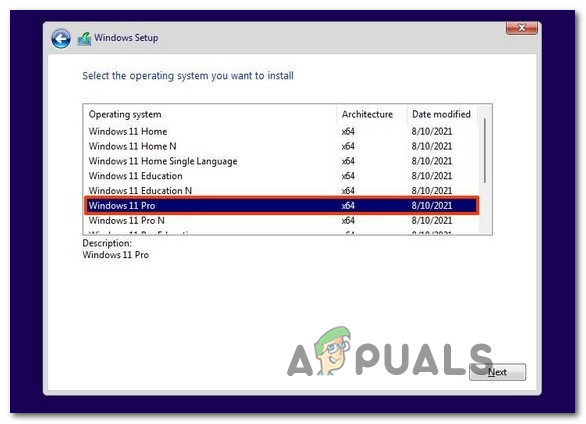How to Fix Windows 11 Black Screen with Cursor Issue?
For all its new features, Windows 11 also comes with a new ongoing bug that affects a lot of early adopters. Some users are reporting that after the initial logins screen, they are stuck with a black screen where the cursor is visible but the Windows 11 PC is totally unresponsive. The only option out of it is to do a hard reboot.

If you’re facing this same issue after migrating to Windows 11, you should know that there are several different underlying scenarios that are most likely causing the problem in your case. We’ve put them all together in a shortlist with all the potential culprits that are confirmed to be causing this widespread Windows 11 issue:
- Bad Windows Update – This problem started occurring initially due to a bad update that was only available through the insider program. Fortunately, Microsoft eventually fixed it with a hotfix included with the cumulative update for build 22000.176. So to fix an update-induced error, you’ll need to install the latest pending updates available through Windows Update.
- Windows 11Boot glitch – There is a situation where this screen can be avoided temporarily (only for the next startup) by creating a Task manager CMD task that will ensure that the next startup is done with no temporary file data carried over.
- Corrupted Winlogon data – Keep in mind that if you’ve just upgraded to Windows 11 from an older Windows version, chances are you’re experiencing this issue due to incorrectly migrated Winlogon registry data. To resolve this particular problem, you will need to modify the configuration of the Winlogon-related Registry keys via Registry Editor.
- Windows 11 language glitch – Every pre-release of Windows 11 currently has this issue where you might experience this black screen behavior when using a different language pack than English US. If you’re stuck into a boot loop due to this, you can resolve the problem by using Powershell to do a language override from an elevated window.
- Windows Update installed incompatible AMD drivers – Windows Update can very well be the underlying cause of this issue. It’s now confirmed by MS engineers too that WU can cause this issue with AMD GPU-powered PC configurations where Windows Update installed incompatible drivers for the graphics card. To fix this issue, you’ll need to boot in Safe Mode with Networking and uninstall the incompatible driver before utilizing AMD Software Updater to install the latest compatible version.
- Incompatible WHQL driver from AMD – Depending on your AMD CPU, it’s also possible to see this issue on Windows 11 due to an incompatibility between the main explorer.exe process and the AMD WHQL driver. IN this case, you should boot in safe mode and replace the current WHQL driver version with a compatible non-WHQL equivalent.
- Bad windows update – Whenever Microsoft releases a bad update that triggers this black screen issue on Windows 11 (they’ve done it multiple times in the past) the go-to fix is always the same. You’ll need to force yourself inside the Windows Recovery menu by triggering 3 consecutive system interruptions and uninstall the latest feature update from the Troubleshoot menu.
- N version of Windows 11 is installed – Keep in mind that the vast majority of Windows 11 user reports that are currently dealing with this issue come from people using N version of Windows 11. If you can afford to do this, you should take the time to clean install a regular Windows 11 version instead of a limited N version.
Do a Remote ShutDown & Restart (temporary fix)
If you’re looking for a quick fix that will allow you to get past the black screen and reboot your computer normally, creating a new Task manager task with ‘shutdown /s /f‘ is probably the best way to go.
However, keep in mind that this fix is only temporary – Expect the issue to return the next time you attempt to boot your Windows 11 PC up from hibernation.
Note: This fix is a great way of being able to enforce the other fixes featured in this article if you are stuck in the black screen loop (every attempt at restarting results in the same black screen issue).
If you want to give this temporary fix a try, follow the instructions below to learn how to do a remove shutdown & restart from a Task Manager task:
- Press Ctrl + Shift + Enter to open up Task Manager.
- If the Task Manager opens up with the simple interface, click on the More details button at the bottom to bring up the expert interface.
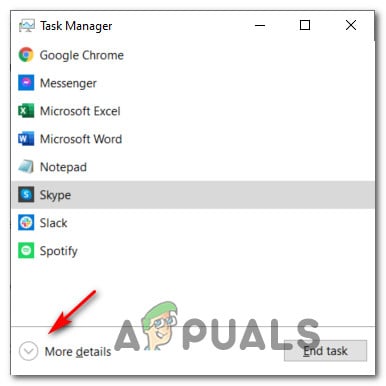
Expanding the Expert interface on Task Manager - Once you’re inside the expert interface of Task Manager, click on File from the ribbon bar at the top, click on Run new task.
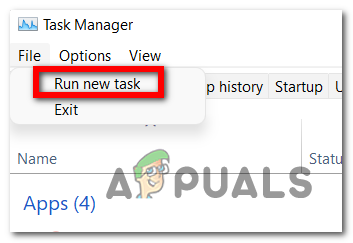
Running a new Task in Task Manager - Inside the Create new task, type ‘cmd’ inside the Open box, then check the box associated with Create this task with administrative privileges and click Ok to launch an elevated Command Prompt.

Open up an elevated CMD prompt - When you’re prompted by the User Account Control, click Yes to grant administrative privileges.
- Once you’re inside the elevated CMD prompt, type the following command and press ENTER to run it:
shutdown /s /f
Note: Make sure to space out the 2 /s and /f parameters (otherwise the command will fail).
- Wait until your machine shuts down and restarts and see if the black screen issue is bypassed.
- Begin troubleshooting using the next methods below to fix the black screen issue permanently on Windows 11.
Install every pending Windows 11 Update
Before you go through every other fix, you should start by making sure you’re running on the latest available Windows 11 build. As we’ve mentioned in the short description above, this problem was originally caused due to a bad Windows Update released for the development build of Windows 11.
Since then, Microsoft has released a series of hotfixes that eventually resolved this problem (if it was caused by a bad update in the first place).
As of now, you’ll need to update to Windows 11 build 22000.176 to eliminate a bad update off your culprit’s list. This method is confirmed to work for all Windows 11 builds (development, beta, and public).
Follow the instructions below for set by step instructions on install every pending Windows 11 update in order to bring your build to the latest one available:
- Open up a Run dialog box by pressing Windows key + R. Once you’re inside the text box, type ‘ms-settings:windowsupdate’ and press Enter to open up the Windows Update page of the Settings menu.

Install Windows Update - Once you’re inside the Windows Update screen, move over to the right-hand side menu and click on Check for Updates to see if any new Windows 11 updates are available.

Checking for Updates on Windows 11 - Wait until the initial scan is complete and let WU figure out if any new updates are available. If any new ones are available, click on Download now, then wait until they’re downloaded and click on Install Now (in case the installation doesn’t start automatically).

Install Windows 11 updates - Wait until every available Windows 11 is installed, then reboot your PC when asked to do so.
Note: Keep in mind that if you have a lot of pending updates waiting to be installed, you might be prompted to restart your PC before every update is installed. If this happens, do as instructed, but make sure to return to this screen and complete the installation of the remaining updates after the next startup is complete. - After every available update is installed and you manage to bring your Windows 11 build to the latest, monitor the situation to check if the black screen issue has been dealt with.
In case the same type of issue is still occurring, move down to the next potential fix below.
Adjust value data of Winlogon
As it turns out, there are certain scenarios where the Winlogon component is modified to prevent the main Windows Explorer process (explorer.exe) from starting right after the user gets past the login screen.
Note: This behavior is quite common among users that have upgraded to Windows 11 from an older Windows version instead of clean installing. The problem seems to be caused by bad file migration.
If this scenario is applicable, you will get stuck in a black screen with no way of going back or getting your taskbar to show.
Fortunately, you can resolve this issue by forcing your way into Task Manager and creating a new task that modifies the Winlogon behavior so that explorer.exe is called into action immediately after you complete the logins screen.
Follow the guide below for step by step instructions on how to do this:
- Once you’re faced with the black screen, press Ctrl + Alt + Delete to open up the Windows Security menu on Windows 11.
- Inside the Windows Security menu, click on Task Manager from the list of available options.

Opening up Task Manager from the Windows Security menu Note: If the simple interface of Task Manager opens by default, click on Show More details using the menu at the bottom.
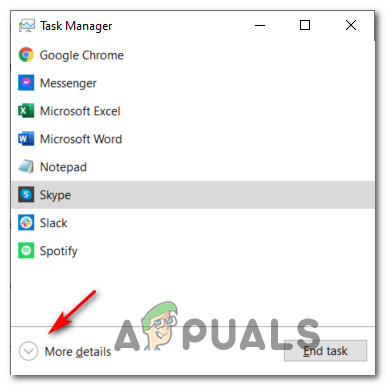
Show more details in Task Manager - Once you’re inside the advanced interface of Task Manager, use the ribbon at the top to click on File, then click on Run New Task from the context menu that just appeared.

Running a new Task in Task Manager - Once you’re inside the Create new task window, type ‘regedit’ inside the Open box, then check the box associated with Create this task with administrative privileges and click on Ok.
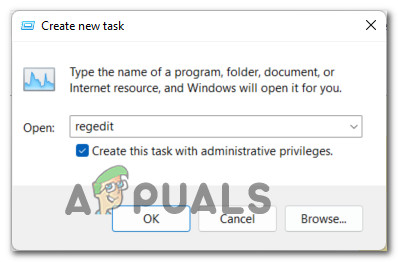
Create a Regedit task - If you’re prompted by the User Account Control, click Yes to grant administrative privileges.
- Once you’re inside the Registry Editor, use the left-hand menu to navigate to the following location:
Computer\HKEY_LOCAL_MACHINE\SOFTWARE\Microsoft\Windows NT\CurrentVersion\Winlogon
Note: You can either get to this location manually or you can copy the path above and paste it inside the navigation bar of Registry Editor (at the top) and hit Enter to get there instantly.
- Once you’re inside the correct location, ensure that the Winlogon key is selected, then move over to the right-hand section and double-click on Shell.

Editing the Shell key - Once you’re inside the Edit String window, ensure that the Value data is set to explorer.exe, then click Ok to save the changes.

Editing the Shell key Note: If the value data of Shell is already explorer.exe, leave it this way and move directly to the next potential fix below.
- Hard reboot your PC and see if the problem is now fixed.
In case the same kind of issue is still occurring, move down to the next potential fix below.
Do a Language Ovveride via Powershell
As it turns out, there’s also a chance that you’re dealing with a language bug that’s only affected users that have previously configured Windows 11 for a different language than English (US).
If this bug is what’s making you get stuck in the black screen loop, you can probably resolve the issue by forcing a Windows UI language override from an elevated Powershell command.
Several affected users that we’re dealing with the same kind of issue have confirmed that they were finally able to bypass the black screen after doing this.
Note: If the fix is successful in your particular case, you can go back to your regular language from the Settings menu.
In case you’re looking for step-by-step guidance on enforcing this fix, follow the instructions below:
- Press Ctrl + Alt + Delete to bring up the quick selector menu, then click on Task Manager from the available options.

Opening up Task Manager from the Windows Security menu - If the simple interface of Task Manager is opened, click on More details from the bottom of the screen.
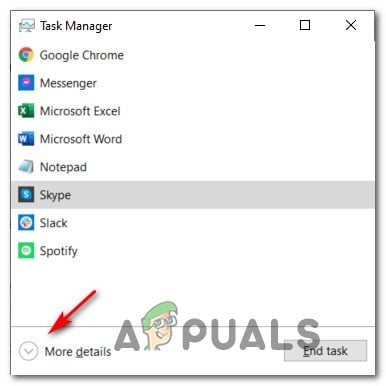
Opening up the More details menu - Once you’re inside the expert interface of Task Manager, use the ribbon bar at the top to click on File, then click on Run new task from the list of available options.
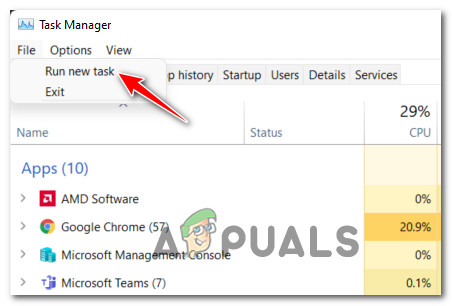
Run a new task from Task Manager - Once you’re inside the Create New Task window, type ‘powershell inside the text box, then check the box associated with Create this task with administrative privileges and hit Enter to run the task.

Open an elevated Powershell window Note: If you’re prompted by the User Account Control window, click Yes to grant administrative privileges.
- Inside the elevated Powershell window, type or paste the following command and press Enter to perform a UI language override on Windows 11 and make the switch to en_US:
Set-WinUILanguageOverride -Language en-US
- After the command is processed successfully, press CTRL + ALT + DELETE, then click on Sign Out.
- After a couple of seconds, sign back in and see if the problem is fixed.
Note: It’s important to avoid rebooting after switching the UI language via Powershell – you need to sign back in, otherwise it will not work.
In case this method was not effective in your case, move down to the next potential fix below.
Reinstall the AMD drivers using AMD Radeon Software Updater (if applicable)
If you’re using an AMD Rysen CPU or a GPU from the same manufacturer, there’s a decent chance that you’re encountering this issue due to bad updates that Windows Update installed by mistake.
As it turns out, there is an issue with how WU interprets the updates that need to be installed on insider Windows 11 builds (particular for the beta version) and might install the wrong version of AMD drivers which might force your PC to become stuck in a boot loop.
Important: This fix is only applicable if you’re using an AMD GPU.
If this scenario is applicable, you should avoid using Windows Update for updating your AMD drivers and instead use the AMD Radeon Software Updater to install the correct drivers according to your current configuration.
Follow the instructions below to get rid of the bad drivers and install the correct equivalents using the AMD Radeon Software Updater:
- Boot your Windows 11 computer in Safe Mode with Networking and wait until the startup is complete.

Boot in safe mode with networking Note: If the black screen issue doesn’t occur at every startup, you can boot normally.
- Once the booting sequence is complete, press Windows key + R to open up a Run dialog box. Inside, type ‘devmgmt.msc’ and press Enter to open up Device Manager.

Open Device Manager - Once you’re inside Device Manager, expand the drop-down menu associated with Display Adapters, then right-click on your current AMD GPU and choose Uninstall device from the context menu that just appeared.

Uninstall AMD GPU - Once you’re prompted by the confirmation window, check the box associated with Attempt to remove the driver for this device, then click on Uninstall.
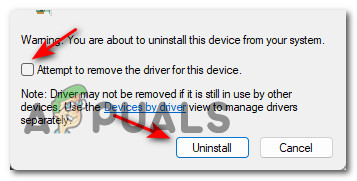
Uninstall AMD driver - After the uninstallation is complete, DON’T restart your computer since this will prompt Windows Update to install incompatible AMD drivers again (to replace the generic ones that you’re currently using).
- Instead, open your default browser and visit the official download page of AMD Radeon Software and click on Download Now.
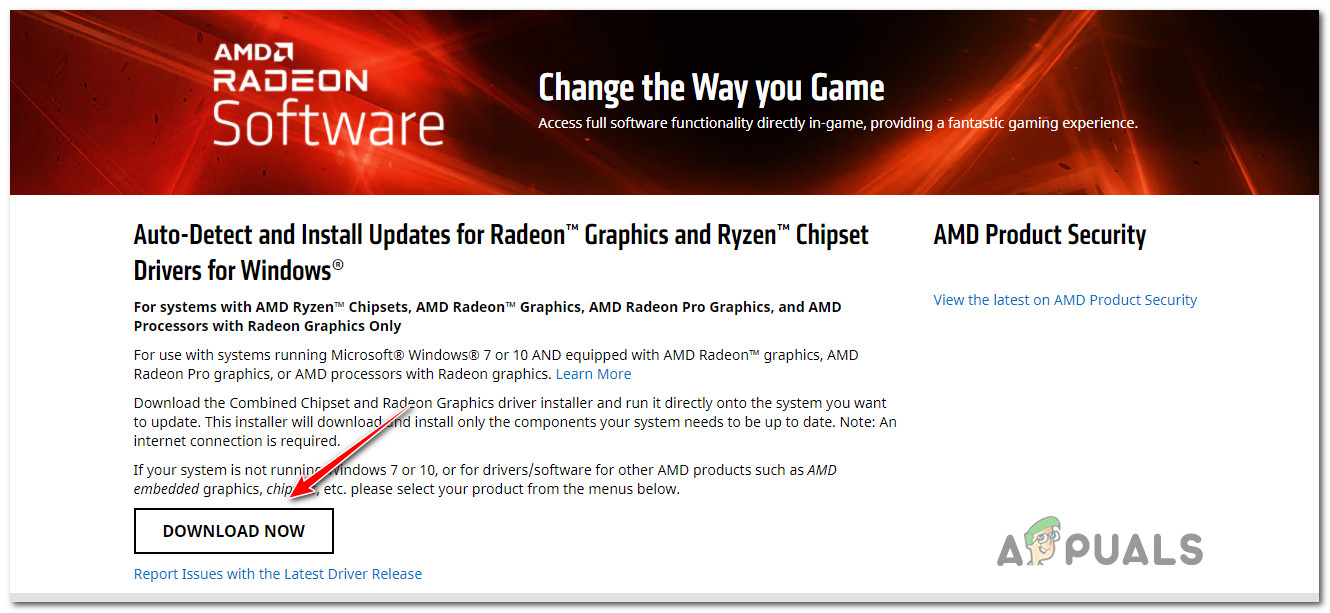
Download AMD software - After the download is complete, double-click on the installer and click Yes at the User Account Control.
- Inside the installer’s window, follow the on-screen instructions to complete the installation of the Radeon Software Adrenalin.

Iinstalling AMD Adrenalin - Once the AMD updating software is installed, follow the on-screen instructions to install the correct AMD drivers before restarting your PC.
In case you’re still presented with the same black screen the next type you attempt to boot up your Windows 10 computer, move down to the next method above.
Install the non-WHQL driver from AMD in Safe Mode (if applicable)
In case you’re using AMD hardware and you’ve started experiencing the black screen issue on Windows 11 immediately after restarting after a Windows Update was installed, chances are the issue is occurring due to a conflict between explorer.exe and an incompatible WHQL driver.
Several affected users that we’re also dealing with this problem have confirmed that they managed to get the issue fixed after they booted into Safe Mode and downloaded & installed the latest stable version of the non-WHQL driver from AMD (21.6.2.)
After doing so and rebooting, Windows 11 booted into the GUI without getting stuck in the same black screen loop.
Important: Disregard this method if you don’t have AMD hardware (CPU or GPU).
Follow the instructions below to install the non-WHQL driver from AMD and resolve the black screen issue on Windows 11:
- Use the first method in this article (above) to escape the black screen loop and boot up your Windows 11 computer normally.

Boot in safe mode with networking Note: If this doesn’t work, follow these instructions to boot your Windows 11 computer in safe mode with networking.
- Once the boot sequence is complete, open your browser and visit the download page of the AMD non-WHQL driver.
- Inside, scroll all the way down to The Radeon Software Adrenalin 21.6.2 installation package category and click on the Radeon Software Adrenalin 21.6.2 Driver for Windows® 10 64-bit.

Downloading the latest version of the non-WHQL driver. - Once you’re inside the installer prompt, click Yes to grant administrative access when you’re prompted by the User Account Control.
- At the first installation window, follow the on-screen instructions to successfully unpack the driver + the utility that will install the correct drivers.
- After the unpacking operation is complete, a new AMD Radeon Software Installer window will automatically open. This is where you can actually install the non-WHQL driver and reboot when prompted to do so.

Install the latest non-whql driver from AMD - Follow the on-screen instruction to complete the operation, then reboot your PC one final time.
If everything went smoothly, you should be able to boot normally and avoid the black screen issue on Windows 11 entirely.
In case this method was not applicable to your current hardware configuration or you followed it without success, move down to the next method below.
7. Uninstall the latest feature updates
If none of the methods above have been effective in your case, and you only noticed the issue appearing after you installed a pending Windows update, chances are Microsoft has released yet another bad update that ended up causing this black screen issue on Windows 11.
Typically when you find yourself in this particular scenario, you should be able to fix the issue by forcing your PC to enter Windows Recovery. Once you’re inside, you can easily uninstall the latest feature update to hopefully resolve the problem.
Note: Keep in mind that this issue isn’t necessarily caused by a bad update. It could have just as easily been caused by an unexpected system interruption while your system was busy installing the pending update – in this case, uninstalling the latest update will force your OS to install it again properly.
Follow the instructions below to force your Windows 11 computer to boot into Windows Recovery mode and uninstall the latest feature update:
- Reboot your PC and cause a system interruption dooring the booting sequence – by long-pressing the power button until power is cut off.

Interrupt during the boot screen Note: Performing 3 consecutive system interruptions during the boot process will force your Windows 11 computer to boot directly into the Windows Recovery screen.
- Once you’re inside the Advanced Options screen, click on Troubleshoot from the list of available options.
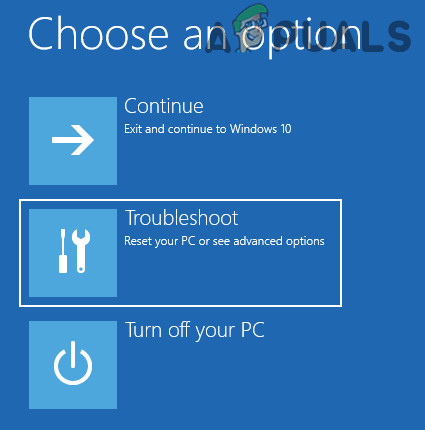
Open the troubleshoot tab - From the Troubleshoot tab, click on Uninstall Updates.
- Once you’re inside the Uninstall Updates screen, click on Uninstall’s latest feature update.
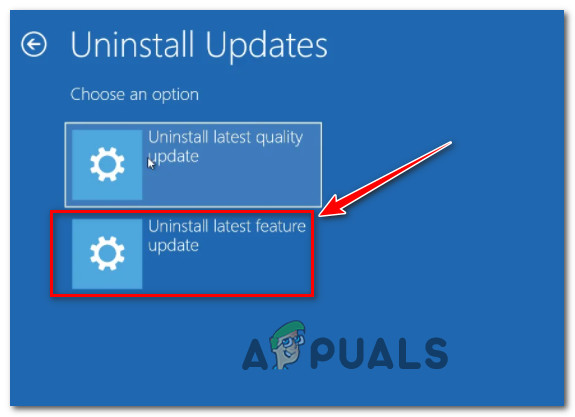
Uninstalling the latest feature update - Next, follow the remaining screens to complete the installation of the feature update, then allow your Windows 11 PC to reboot.
- If your Windows 10 computer boots up normally, use it normally and install the feature update once again when prompted to do so while making sure there are no system interruptions.
If this scenario is not applicable, move down to the next potential fix below.
Install a Non-N Version of Windows 11 (if applicable)
In case you’re encountering this issue after installing an N version of Windows 11, you might want to migrate over to a non-N version of this operating system.
Other affected users finding themselves in a similar scenario have confirmed that they managed to fix the issue after they got rid of their N version and clean installed a regular version once again.
If you’re at a means-end and this is the only option left, follow these instructions to clean install a non-N version of Windows 11.
Just make sure to pick a non-N version when you’re prompted to select an operating system version by the Windows Setup installation screen.
